Samsung Galaxy S20 Ultra vs Google Pixel 4 XL: specs, size and design comparison
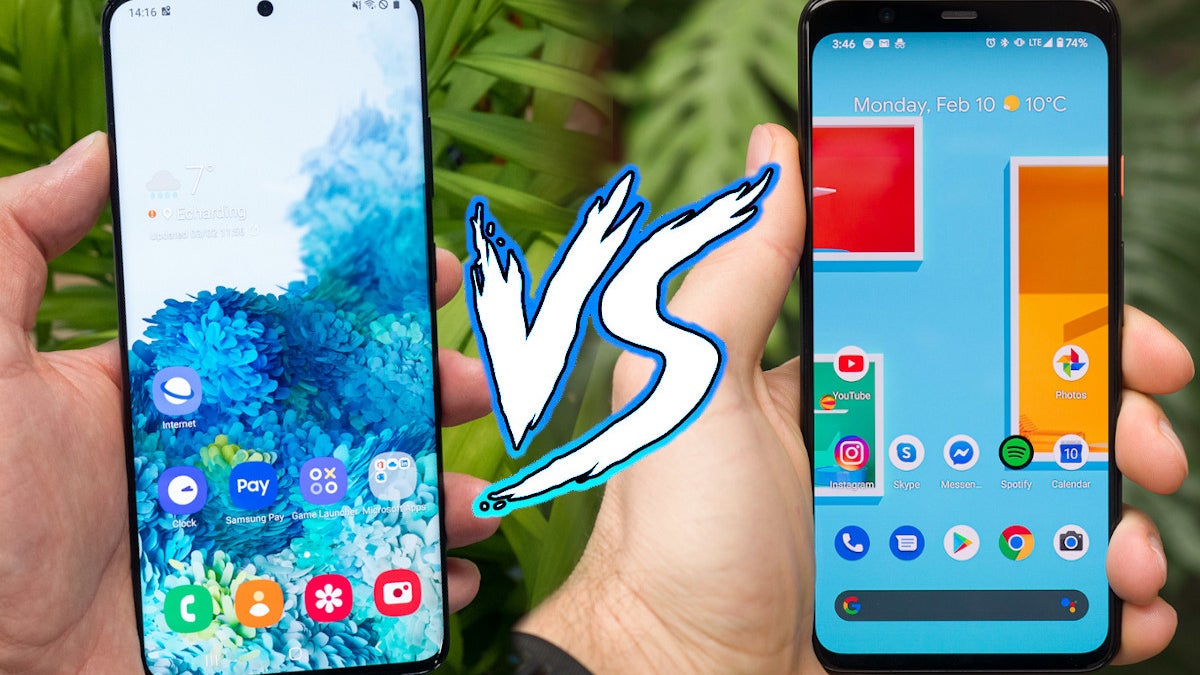
There’s a new kid on the block. Its name? Galaxy S20 Ultra. It’s here to challenge Android flagships and it’s not messing around. In the other corner of our virtual boxing ring is Google’s Pixel 4 XL.
With the Pixel 5 still about 8 months away, it’s up to the Pixel 4 to stand up against Samsung’s latest creation. Perhaps not the fairest fight but that’s what we have available right now, so let’s get to it.
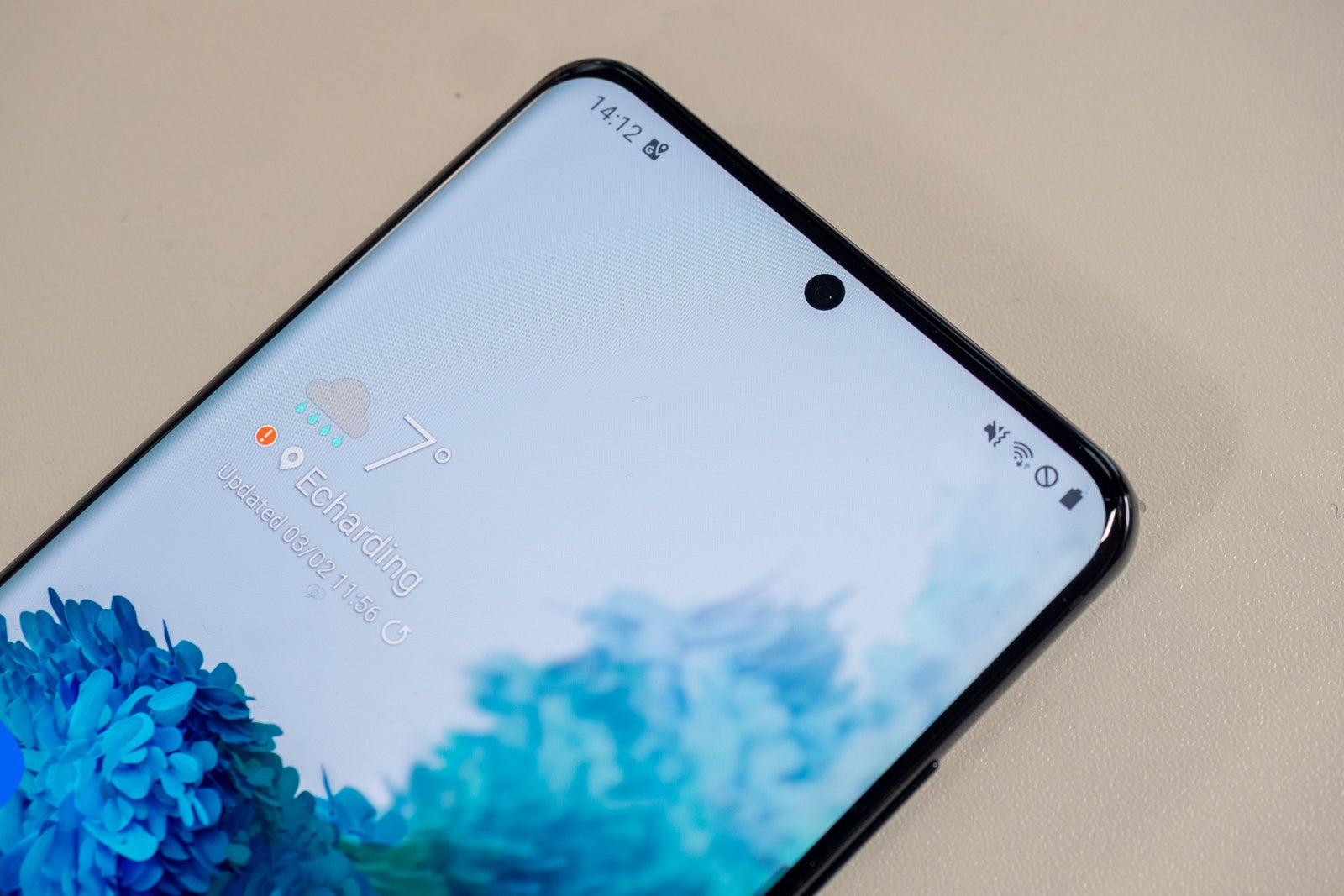
Looking at the two phones from the front, you might think we’re comparing two phones that came out a couple of years apart and not mere 4 months. While the S20 Ultra has slim bezels and a tiny hole for the camera, the Pixel 4 XL comes with thicker borders around the screen and a massive top bezel that looks completely out of place in 2020.
Overall, the Pixel looks more utilitarian with its flat display and matte black frame while the Ultra is sleek and modern, giving off a luxurious vibe.
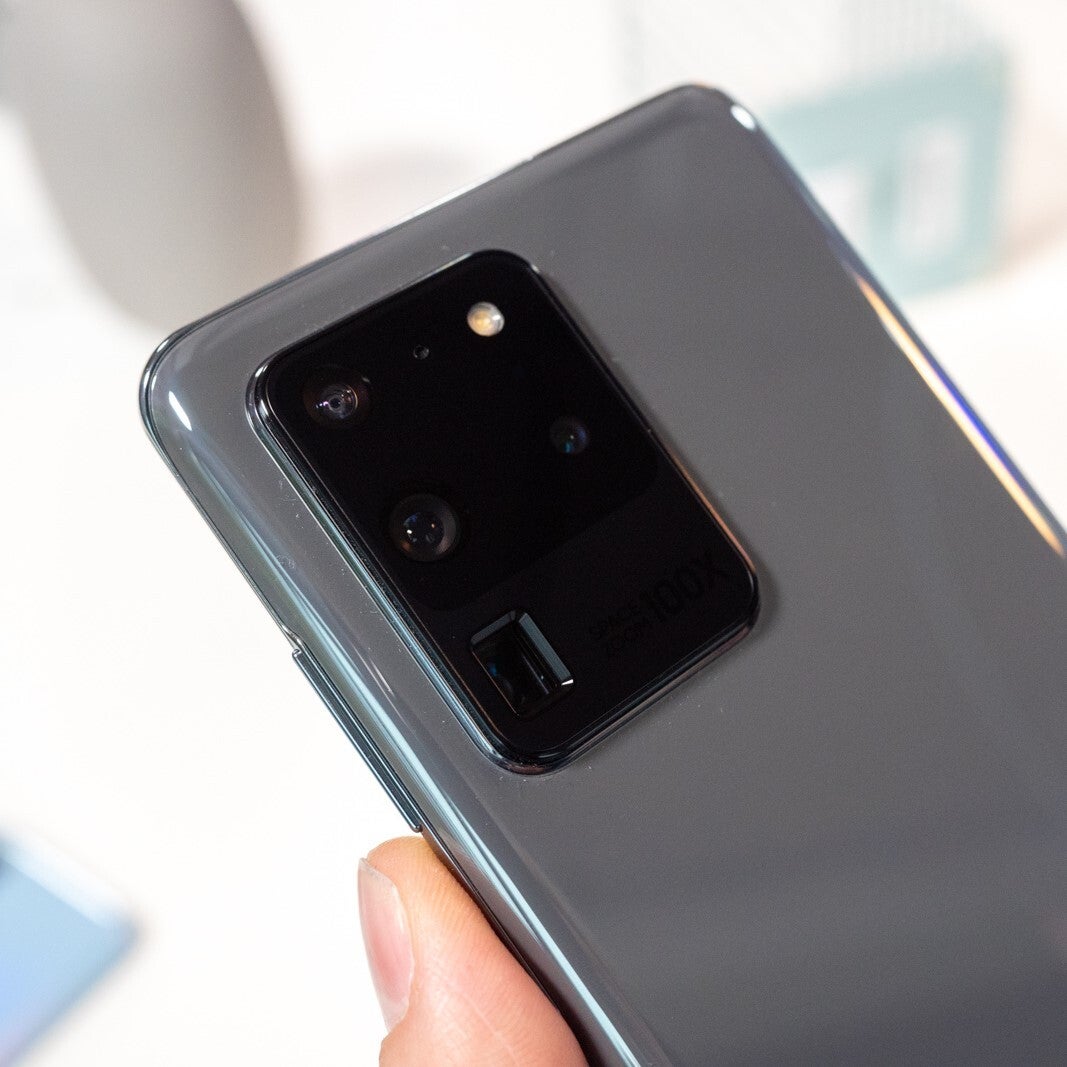
When you turn the S20 Ultra around, however, you’re greeted with something more professional than luxurious: a massive camera module. Suddenly, you feel like that’s a camera first and a smartphone second. The Pixel 4 XL camera, which until recently we considered big, now pales in comparison. The look of the Ultra is definitely an acquired taste but it doesn’t fail to pull your attention towards the phone’s main advantage over the other S20 phones. But more about the cameras later.
Unsurprisingly, the Ultra beats the Pixel when it comes to size. A 6.9-inch display means a big body, no way around it. Thanks to the aforementioned top bezel, however, the Pixel 4 XL is not much smaller despite its 6.3-inch screen.
Both displays are OLED with QHD resolution and high refresh-rate but the S20 gets extra points for having 120Hz instead of the Pixel’s 90Hz. One caveat, however, is that in order to take advantage of the high refresh-rate of the Samsung, you have to turn down the resolution to 1080p.
The differences continue to pile up with full force when we get to the specs of the two phones. Here’s a quick rundown of the most important ones:
In short, the S20 Ultra has more of everything. More powerful CPU and GPU thanks to the Snapdragon 865, twice the memory which is also much faster (LPDDR5 vs LPDDR4) and twice the storage with the option to add more via the MicroSD card slot.
To top it off, the battery is 35% larger as well, which should result in great battery life despite the massive display.
One thing the Pixel 4 XL has as an advantage is the radar system embedded in the top bezel. Besides the relatively useless air gestures, it’s purpose is to serve as a secure face unlock. Needless to say, no one buys a Pixel because of it, but we had to mention it so there’s at least some trading of punches.
But we all know the Pixel’s major strength is its camera, so how does it stack against the Ultra in that department?
Before we continue with what is basically Samsung trampling over Google, we should say that there’s a lot more than hardware that determines the quality of smartphone photography. Google has always managed to squeeze a ton of performance from uninspiring hardware using its camera software.
As you can see, there’s no question which phone has the better hardware. The Galaxy S20 Ultra not only has two additional sensors but the ones that correspond to what the Pixel has, are way better.
108MP main sensor vs a 12MP one? Again, megapixels aren’t everything, but they do offer some advantages like combining the data from 9 pixels into one (called nona-binning) for sharper and brighter low-light photography.
And the 2x telephoto lens on the Pixel? Just not enough in 2020. The Samsung comes with a 5x optical zoom tele-camera that goes up to 100x with the help of Samsung’s new camera features such as Super Resolution Zoom and Space Zoom. Space Zoom! Now that’s “Ultra”!
The two additional sensors on the S20 are just the cherry on top. We don’t know how far along Google is with the design of the Pixel 5, but if it wants to remain relevant, it better bring some new hardware to the table because the competition isn’t playing around.
As we said in the beginning, this comparison is not quite fair. It’s obvious Samsung went for overkill with the S20 Ultra and that’s reflected in its price as well. But now that it exists, we can’t help but consider it whenever smartphone cameras are the focus of attention and if other manufacturers don’t want to be shamed, they better bring their a-game and do it soon.
Now all that’s left is to get the S20 Ultra and put it through its paces to see if it can deliver on the order its hardware made.
Galaxy S20 Ultra vs Pixel 4 XL design and size comparison


When you turn the S20 Ultra around, however, you’re greeted with something more professional than luxurious: a massive camera module. Suddenly, you feel like that’s a camera first and a smartphone second. The Pixel 4 XL camera, which until recently we considered big, now pales in comparison. The look of the Ultra is definitely an acquired taste but it doesn’t fail to pull your attention towards the phone’s main advantage over the other S20 phones. But more about the cameras later.
Both displays are OLED with QHD resolution and high refresh-rate but the S20 gets extra points for having 120Hz instead of the Pixel’s 90Hz. One caveat, however, is that in order to take advantage of the high refresh-rate of the Samsung, you have to turn down the resolution to 1080p.
Galaxy S20 Ultra vs Pixel 4 XL specs comparison
The differences continue to pile up with full force when we get to the specs of the two phones. Here’s a quick rundown of the most important ones:
|
|
|
| Samsung Galaxy S20 Ultra 5G | Google Pixel 4 XL |
| Size | |
|---|---|
| 6.9-inch, 90.70% screen-to-body | 6.3-inch, 82.21% screen-to-body |
| Type | |
| Dynamic AMOLED, 120Hz, HDR, 1400 nits | OLED, 90Hz, HDR |
| Resolution | |
| 3200x1440px, 20:9 ratio, 509 PPI | 3040x1440px, 19:9 ratio, 534 PPI |
| Protection | |
| Corning Gorilla Glass 6 | Corning Gorilla Glass 5 |
| System chip | |
|---|---|
| Snapdragon 865 SM8250 (7 nm) | Snapdragon 855 SM8150 (7 nm) |
| Processor | |
| Octa-core Kryo 585 |
Octa-core Kryo 485 |
| GPU | |
| Adreno 650 | Adreno 640 |
| Memory | |
| 12GB (LPDDR5)/128GB (UFS 3.0) 12GB/256GB 16GB/512GB |
6GB (LPDDR4)/64GB 6GB/128GB |
| Storage expansion | |
| microSDXC up to 1000 GB | not expandable |
| OS | |
| Android (13, 12, 11, 10) | Android (12, 11, 10) |
| Type | |
|---|---|
| 5000 mAh, Li - Polymer | 3700 mAh |
| Charging | |
| Qualcomm Quick Charge 2.0, Samsung Adaptive Fast Charging Qi and Powermat wireless charging, Reverse wireless charging |
USB Power Delivery Qi wireless charging |
| Charge speed | |
| Wired: 45.0W Wireless: 15.0W |
|
| Headphones | |
|---|---|
| No 3.5mm jack | No 3.5mm jack |
| Speakers | |
| Earpiece, Multiple speakers | Earpiece, Multiple speakers |
| Features | |
| 32-Bit DAC, Dolby Atmos, aptX, Dolby Digital, Dolby Digital Plus | aptX-HD |
See the full
Samsung Galaxy S20 Ultra 5G vs Google Pixel 4 XL specs comparison
or compare them to other phones using our
Phone Comparison tool
In short, the S20 Ultra has more of everything. More powerful CPU and GPU thanks to the Snapdragon 865, twice the memory which is also much faster (LPDDR5 vs LPDDR4) and twice the storage with the option to add more via the MicroSD card slot.
One thing the Pixel 4 XL has as an advantage is the radar system embedded in the top bezel. Besides the relatively useless air gestures, it’s purpose is to serve as a secure face unlock. Needless to say, no one buys a Pixel because of it, but we had to mention it so there’s at least some trading of punches.
But we all know the Pixel’s major strength is its camera, so how does it stack against the Ultra in that department?
Galaxy S20 Ultra vs Pixel 4 XL camera specs comparison
Before we continue with what is basically Samsung trampling over Google, we should say that there’s a lot more than hardware that determines the quality of smartphone photography. Google has always managed to squeeze a ton of performance from uninspiring hardware using its camera software.
And yet, there are things that software can’t do, and the Samsung phone can do many of those things thanks to the aforementioned giant camera module. Here’s what it has in store:
|
|
|
| Samsung Galaxy S20 Ultra 5G | Google Pixel 4 XL |
| Rear | |
|---|---|
| Quad camera | Dual camera |
| Main camera | |
| 108 MP (OIS, PDAF) Aperture size: F1.8 Focal length: 26 mm |
12.2 MP (OIS, PDAF) Aperture size: F1.7 Focal length: 28 mm Sensor size: 1/2.55" Pixel size: 1.4 μm |
| Second camera | |
| 12 MP (Ultra-wide, Autofocus) Aperture size: F2.2 Focal Length: 13 mm Pixel size: 1.4 μm |
16 MP (Telephoto, OIS, PDAF) Aperture size: F2.4 Focal Length: 45 mm Pixel size: 1 μm |
| Third camera | |
| 48 MP (Telephoto, OIS, PDAF) Aperture size: F3.5 Focal Length: 102 mm Sensor size: 1/2" Pixel size: 0.8 μm |
|
| Fourth camera | |
| 0.3 MP VGA (ToF 3D depth sensing) | |
| Flash | |
| LED | Dual LED |
| Video recording | |
| 8K UHD (24 fps), 4K UHD (60 fps), 1080p (240 fps), 720p (960 fps) OIS, HDR, Time-lapse video, EIS | 4K UHD (30 fps), 1080p (120 fps), 720p (240 fps) OIS, Time-lapse video, EIS |
| Front | |
| 40 MP (PDAF, HDR) Video capture: 4K UHD (60 fps) |
8 MP (Time-of-Flight (ToF)) Video capture: 1080p |
See the full
Samsung Galaxy S20 Ultra 5G vs Google Pixel 4 XL specs comparison
or compare them to other phones using our
Phone Comparison tool
As you can see, there’s no question which phone has the better hardware. The Galaxy S20 Ultra not only has two additional sensors but the ones that correspond to what the Pixel has, are way better.
108MP main sensor vs a 12MP one? Again, megapixels aren’t everything, but they do offer some advantages like combining the data from 9 pixels into one (called nona-binning) for sharper and brighter low-light photography.
And the 2x telephoto lens on the Pixel? Just not enough in 2020. The Samsung comes with a 5x optical zoom tele-camera that goes up to 100x with the help of Samsung’s new camera features such as Super Resolution Zoom and Space Zoom. Space Zoom! Now that’s “Ultra”!
Conclusion
As we said in the beginning, this comparison is not quite fair. It’s obvious Samsung went for overkill with the S20 Ultra and that’s reflected in its price as well. But now that it exists, we can’t help but consider it whenever smartphone cameras are the focus of attention and if other manufacturers don’t want to be shamed, they better bring their a-game and do it soon.
Now all that’s left is to get the S20 Ultra and put it through its paces to see if it can deliver on the order its hardware made.
Follow us on Google News


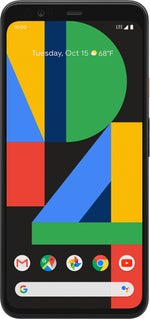


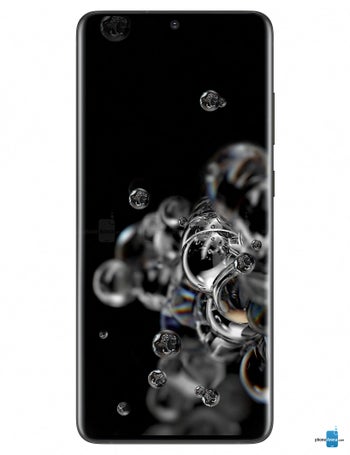








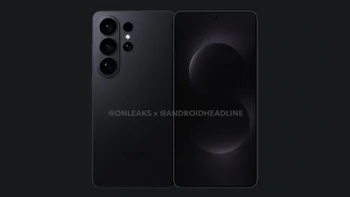




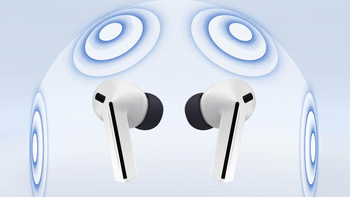
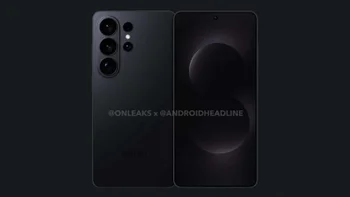

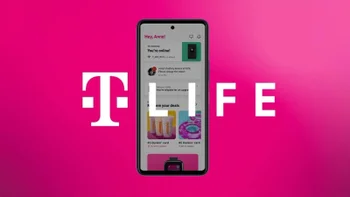


Things that are NOT allowed:
To help keep our community safe and free from spam, we apply temporary limits to newly created accounts: